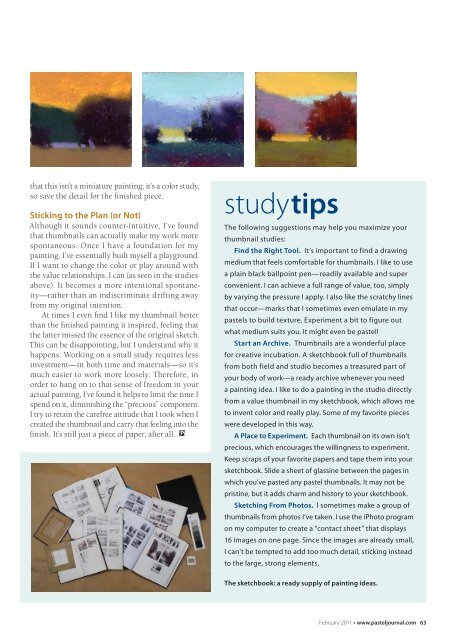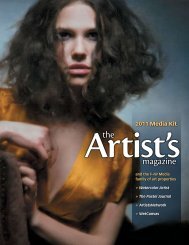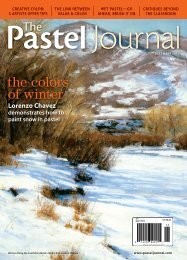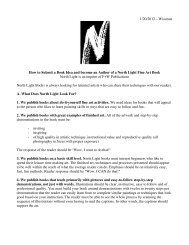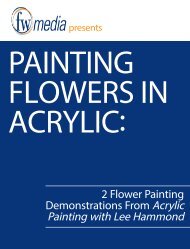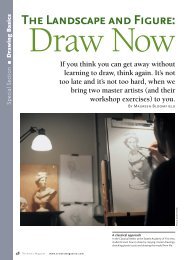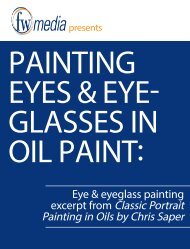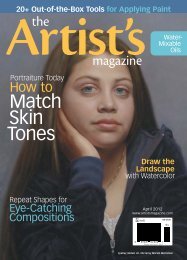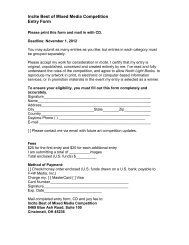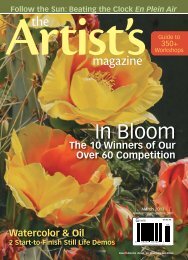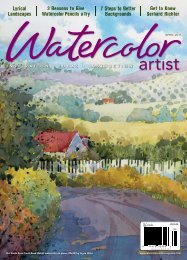The Pastel Journal, February 2011 Sample - Artist's Network
The Pastel Journal, February 2011 Sample - Artist's Network
The Pastel Journal, February 2011 Sample - Artist's Network
- No tags were found...
Create successful ePaper yourself
Turn your PDF publications into a flip-book with our unique Google optimized e-Paper software.
that this isn’t a miniature painting; it’s a color study,so save the detail for the finished piece.Sticking to the Plan (or Not)Although it sounds counter-intuitive, I’ve foundthat thumbnails can actually make my work morespontaneous. Once I have a foundation for mypainting, I’ve essentially built myself a playground.If I want to change the color or play around withthe value relationships, I can (as seen in the studiesabove). It becomes a more intentional spontaneity—ratherthan an indiscriminate drifting awayfrom my original intention.At times I even find I like my thumbnail betterthan the fi nished painting it inspired, feeling thatthe latter missed the essence of the original sketch.This can be disappointing, but I understand why ithappens: Working on a small study requires lessinvestment—in both time and materials—so it’smuch easier to work more loosely. <strong>The</strong>refore, inorder to hang on to that sense of freedom in youractual painting, I’ve found it helps to limit the time Ispend on it, diminishing the “precious” component.I try to retain the carefree attitude that I took when Icreated the thumbnail and carry that feeling into thefinish. It’s still just a piece of paper, after all.study tips<strong>The</strong> following suggestions may help you maximize yourthumbnail studies:Find the Right Tool. It’s important to find a drawingmedium that feels comfortable for thumbnails. I like to usea plain black ballpoint pen—readily available and superconvenient. I can achieve a full range of value, too, simplyby varying the pressure I apply. I also like the scratchy linesthat occur—marks that I sometimes even emulate in mypastels to build texture. Experiment a bit to figure outwhat medium suits you. It might even be pastel!Start an Archive. Thumbnails are a wonderful placefor creative incubation. A sketchbook full of thumbnailsfrom both field and studio becomes a treasured part ofyour body of work—a ready archive whenever you needa painting idea. I like to do a painting in the studio directlyfrom a value thumbnail in my sketchbook, which allows meto invent color and really play. Some of my favorite pieceswere developed in this way.A Place to Experiment. Each thumbnail on its own isn’tprecious, which encourages the willingness to experiment.Keep scraps of your favorite papers and tape them into yoursketchbook. Slide a sheet of glassine between the pages inwhich you’ve pasted any pastel thumbnails. It may not bepristine, but it adds charm and history to your sketchbook.Sketching From Photos. I sometimes make a group ofthumbnails from photos I’ve taken. I use the iPhoto programon my computer to create a “contact sheet” that displays16 images on one page. Since the images are already small,I can’t be tempted to add too much detail, sticking insteadto the large, strong elements.<strong>The</strong> sketchbook: a ready supply of painting ideas.<strong>February</strong> <strong>2011</strong> • www.pasteljournal.com 63


